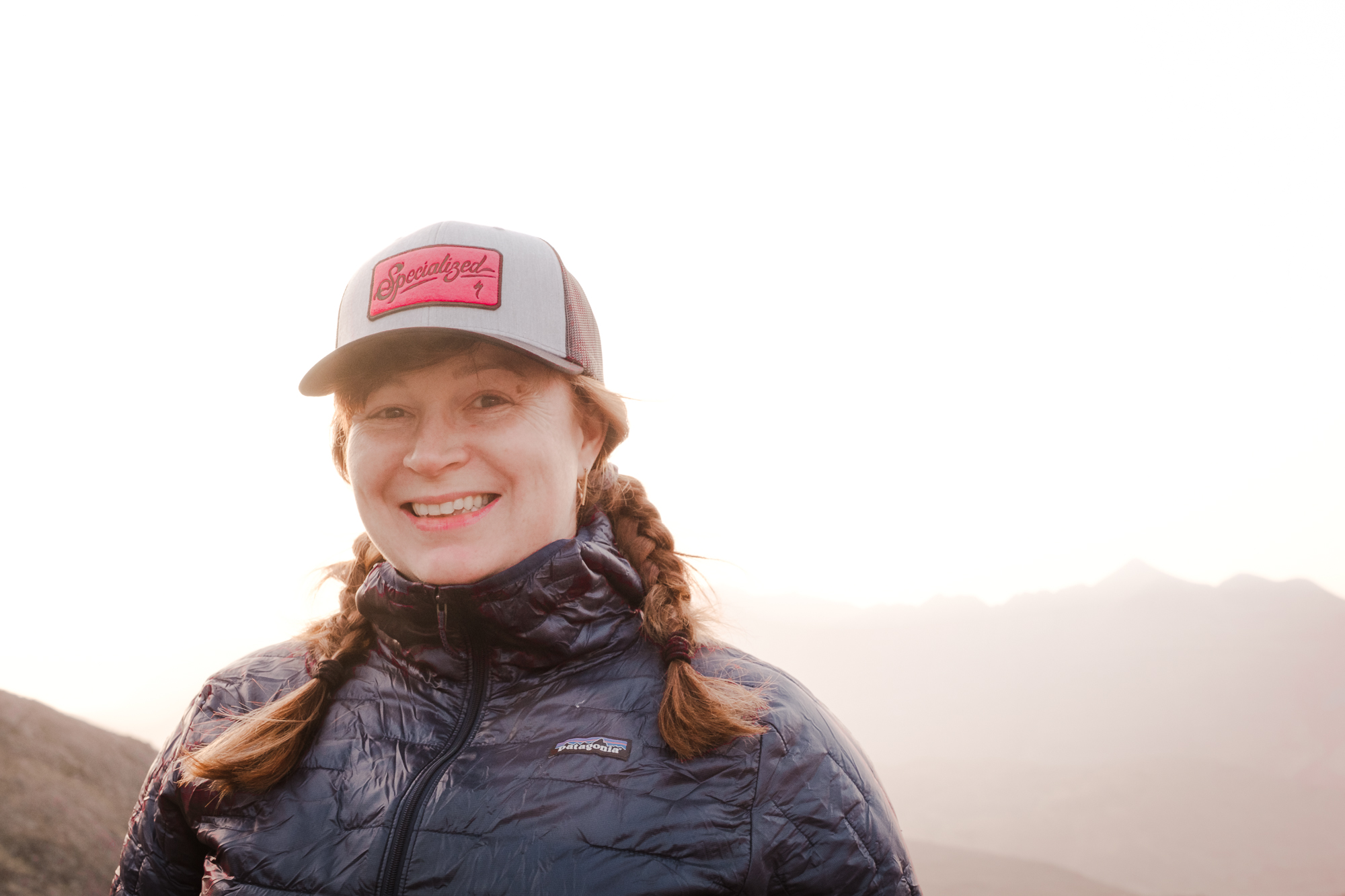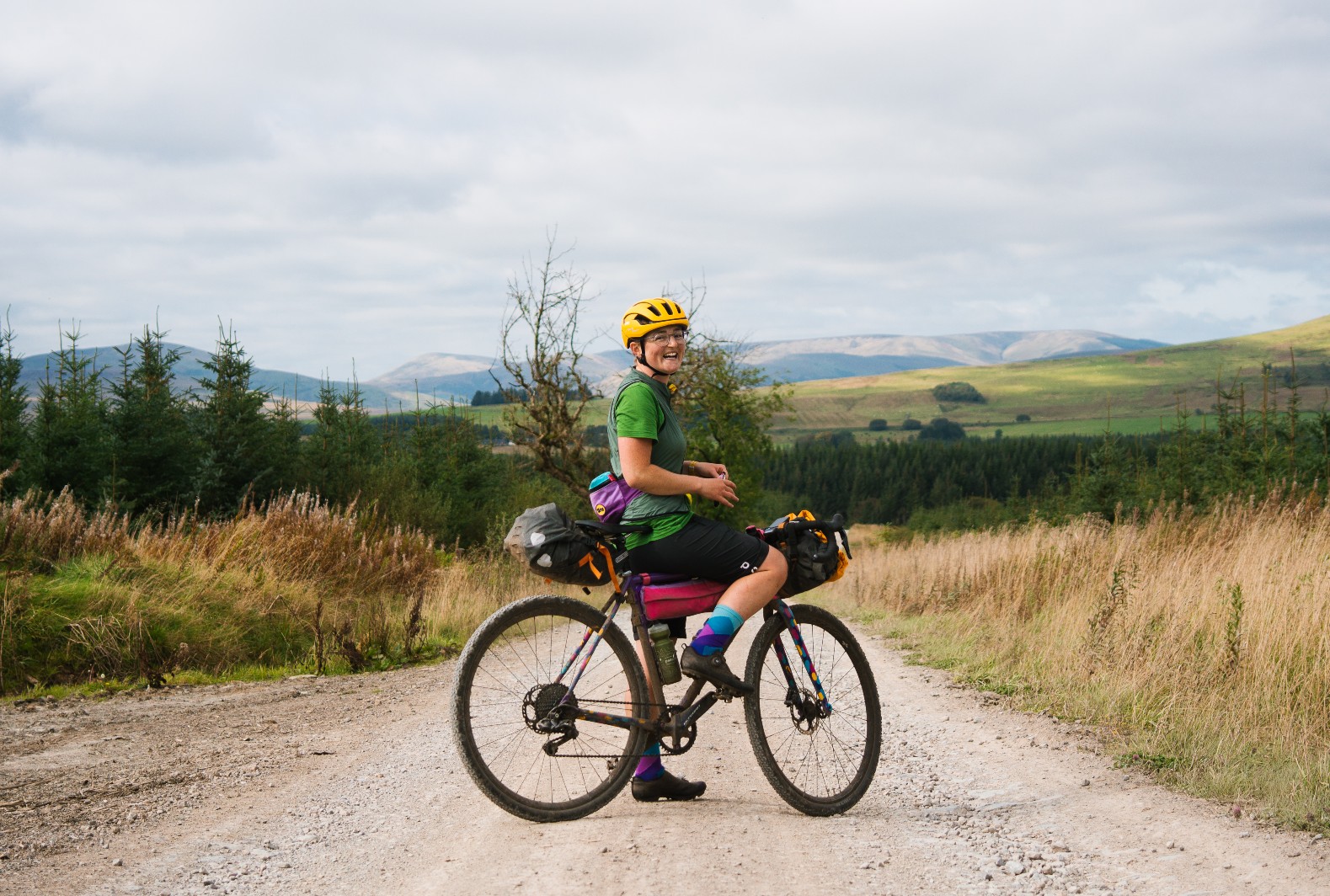If you're planning a serious off-road adventure, exploring your local forest or trail centre, heading into the mountains for epic adventures, racing enduro or downhill, or having fun in the bike park, you’re going to need a mountain bike.
The best women’s mountain bikes are rugged, capable and will ensure you have the most amount of fun possible, and our buyer’s guide includes the bikes we’ve tried, tested and rated highly.
We'll also guide you through the main features of mountain bikes to help you identify the best bike for your budget and the type of riding you love.
The best women’s mountain bikes tried and tested by BikeRadar
All of the following bikes have been tested extensively by our independent product testers and put through their paces on a variety of terrain.
- Juliana Furtado R: £4,099 / $4,099
- Liv Intrigue Advanced 1: £4,199 / $5,600 / AU$6,499
- Juliana Maverick: £4,499 / $4,299
- Scott Contessa Genius: £3,299 / $3,699 / €3,599
- Canyon Spectral WMN CF 8.0: £3,249 / AU$5,499 / €3,499
- Juliana Wilder CC X01 AXS RSV: £8,299 / $9,449
Juliana Furtado R
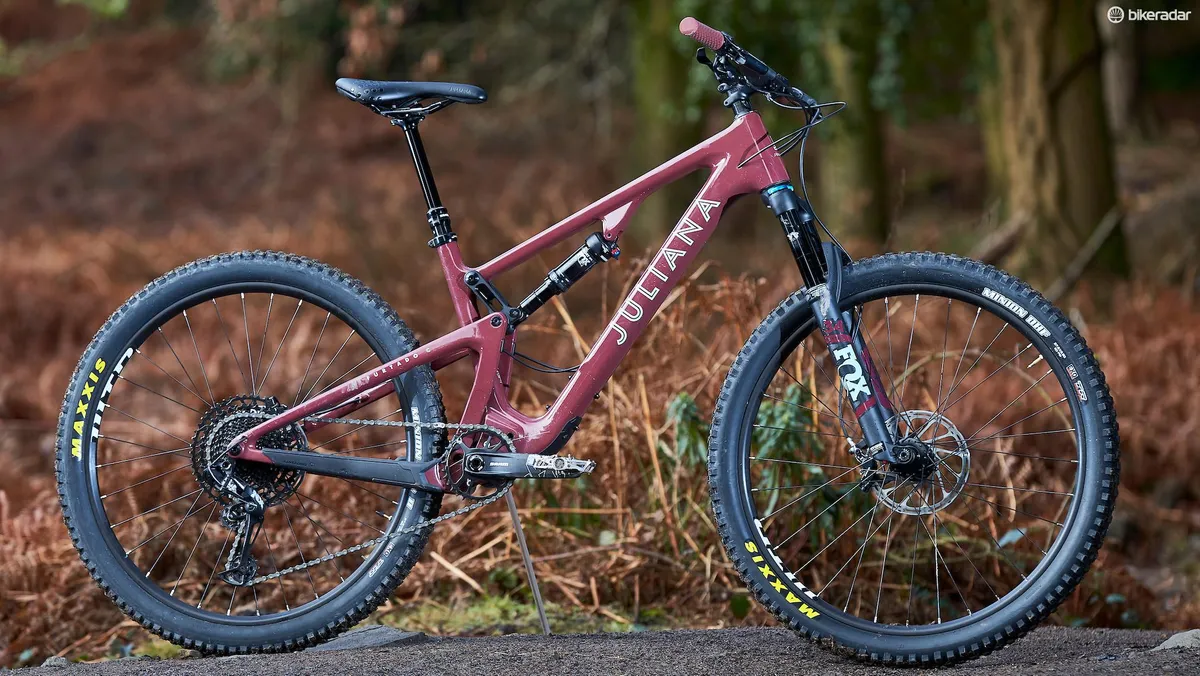
- Fun, playful with a carbon frame
- Flip-chip allows you to slacken/steepen the geometry
- £4,099 / $4,099 as tested
The Furtado was one of the original bikes in the Juliana line-up, and it’s a very capable trail bike that’s super-fun to ride.
It’s capable of handling more than its 130mm of travel might suggest and is a bike that makes flat trails fun and techy trails playful.
Built around 27.5in wheels and the 5010 frame from sibling-brand Santa Cruz, it has a lifetime frame and bearing warranty, and should last years. It's eminently upgradeable too.
Liv Intrigue Advanced 1
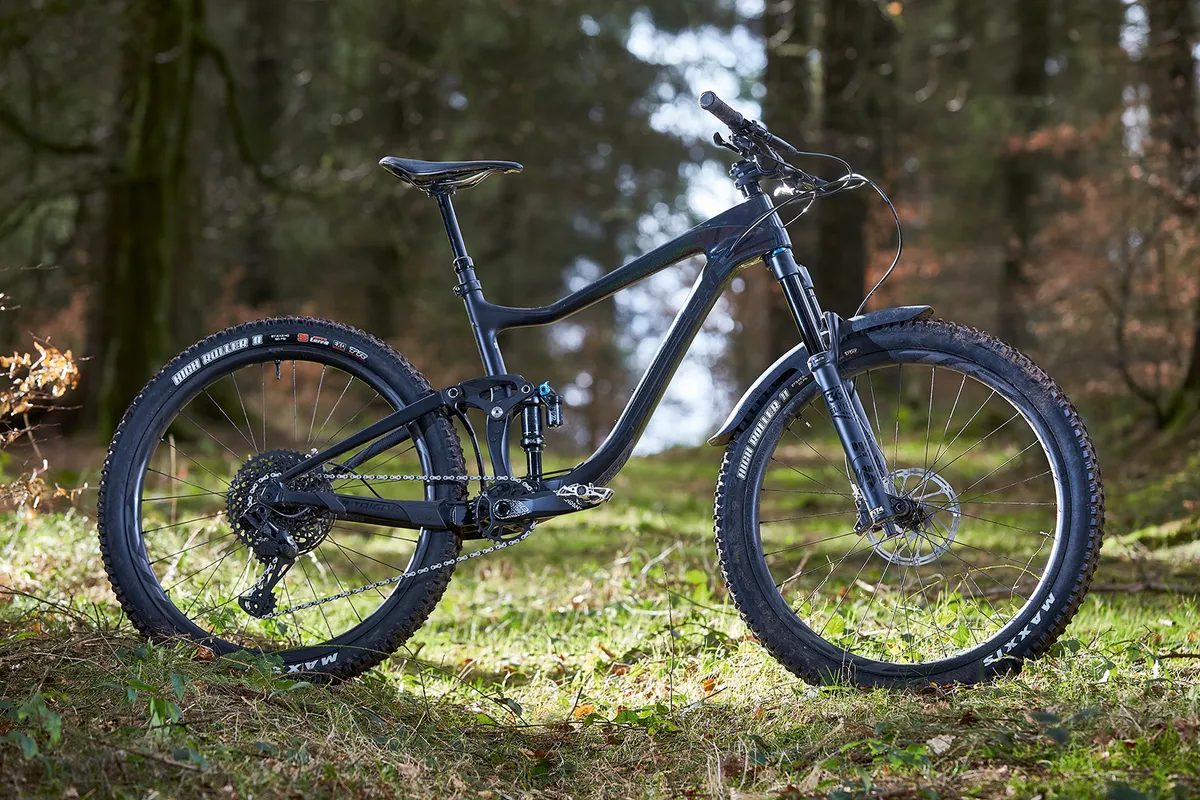
- Women’s-specific trail bike that’s great for smaller riders
- Lightweight carbon frame
- Descent-ready 150mm fork and plush 140mm rear suspension
- £4,199 / $5,600 / AU$6,499 as tested
Designed specifically for women, and based on extensive physiological research, the Intrigue is Liv’s descent-ready trail bike.
It’s a versatile all-rounder of a mountain bike, ideal for both trail centre riding and big adventures.
Available in an XS frame, smaller riders are well-catered for and the suspension has been tuned to suit the (on average) lighter weight-to-height of women riders.
Juliana Maverick
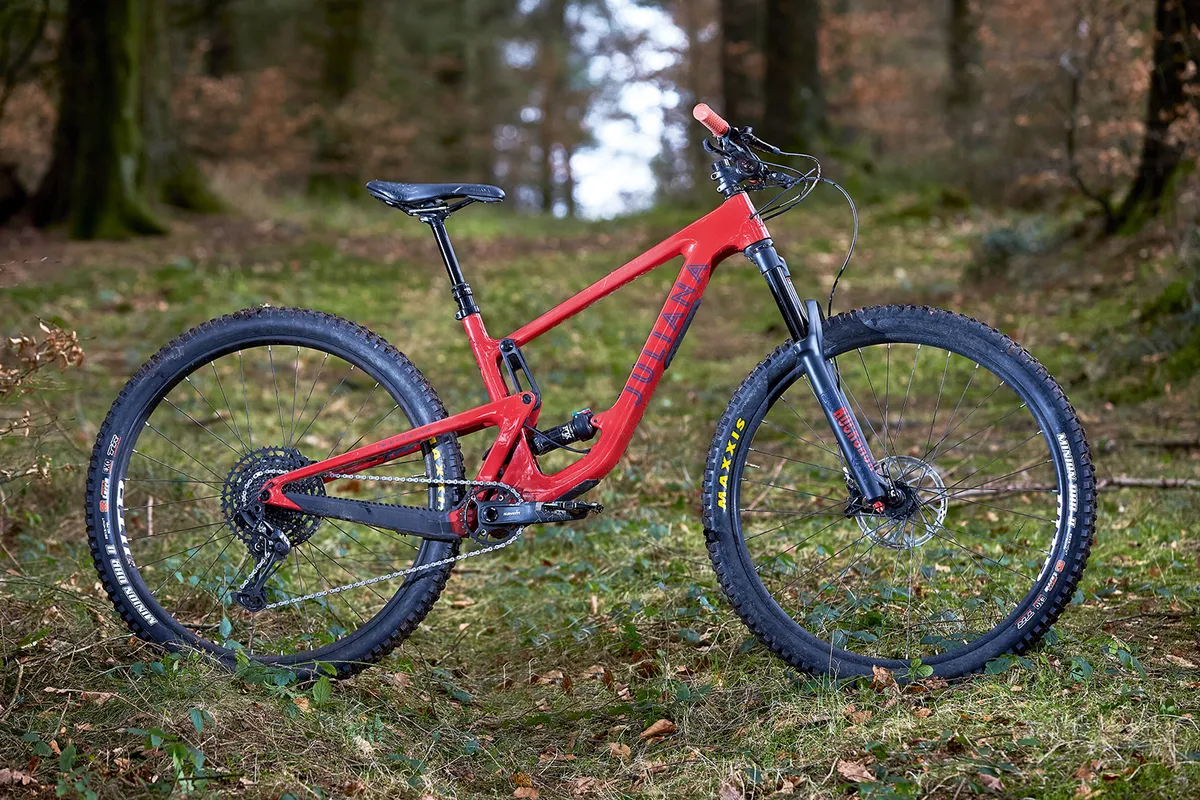
- Confidence-inspiring, playful and capable 29er
- Carbon frame with progressive geometry
- £4,499 / $4,299 as tested
The Maverick is Juliana’s answer to the Santa Cruz Hightower and boasts 29er wheels, a 150mm fork travel and 140mm rear travel.
Yes, it’s a trail bike, but it’s the kind of trail bike that will also take you to enduro races and downhill tracks, and still feeling playful on your local cross-country loop.
Scott Contessa Genius 910
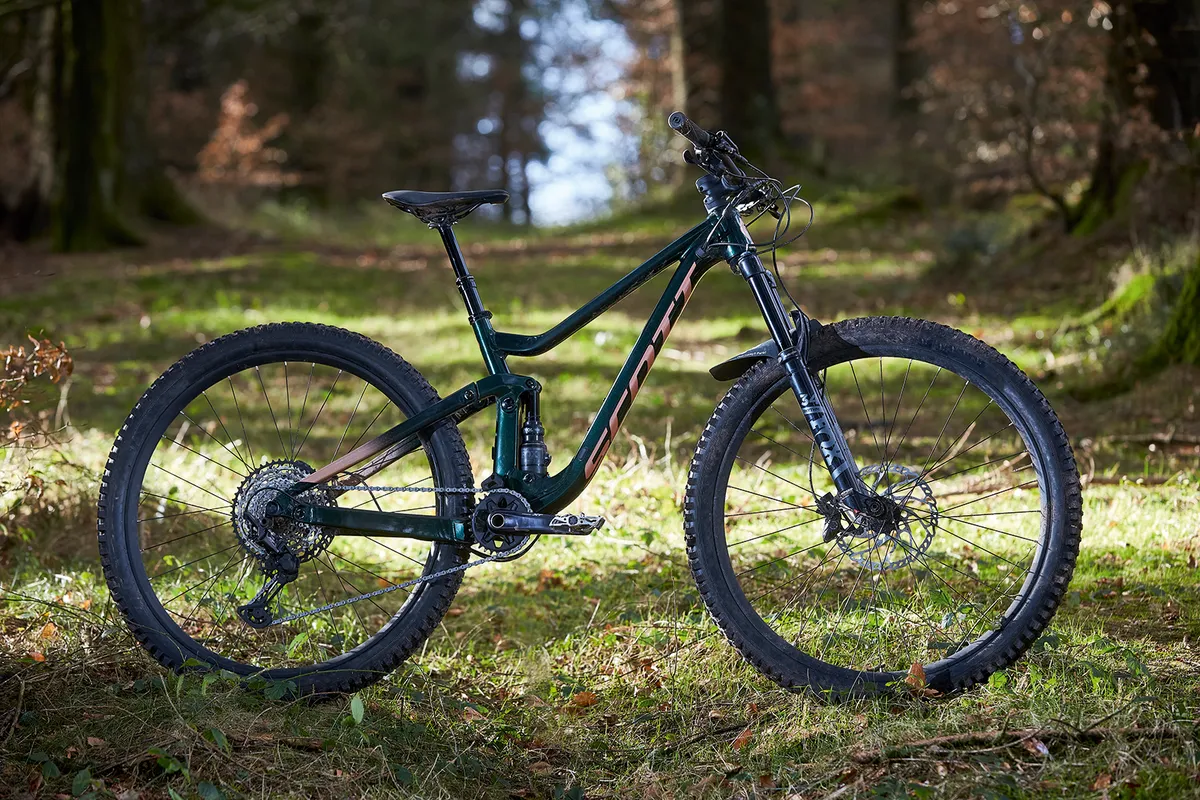
- High quality alloy-framed 29er
- Well-balanced and composed feel
- Lots of features, but a complicated cockpit setup
- £3,299 / $3,699 / €3,599 as tested
Scott’s Contessa Genius shares a frame with the unisex Genius but has a women’s-specific saddle.
The impressive geometry encourages you to ride hard and with frame sizes up to an L taller women should have no issue finding the right fit.
150mm of travel front and rear contributes to this being a really capable trail bike.
Canyon Spectral WMN CF 8.0
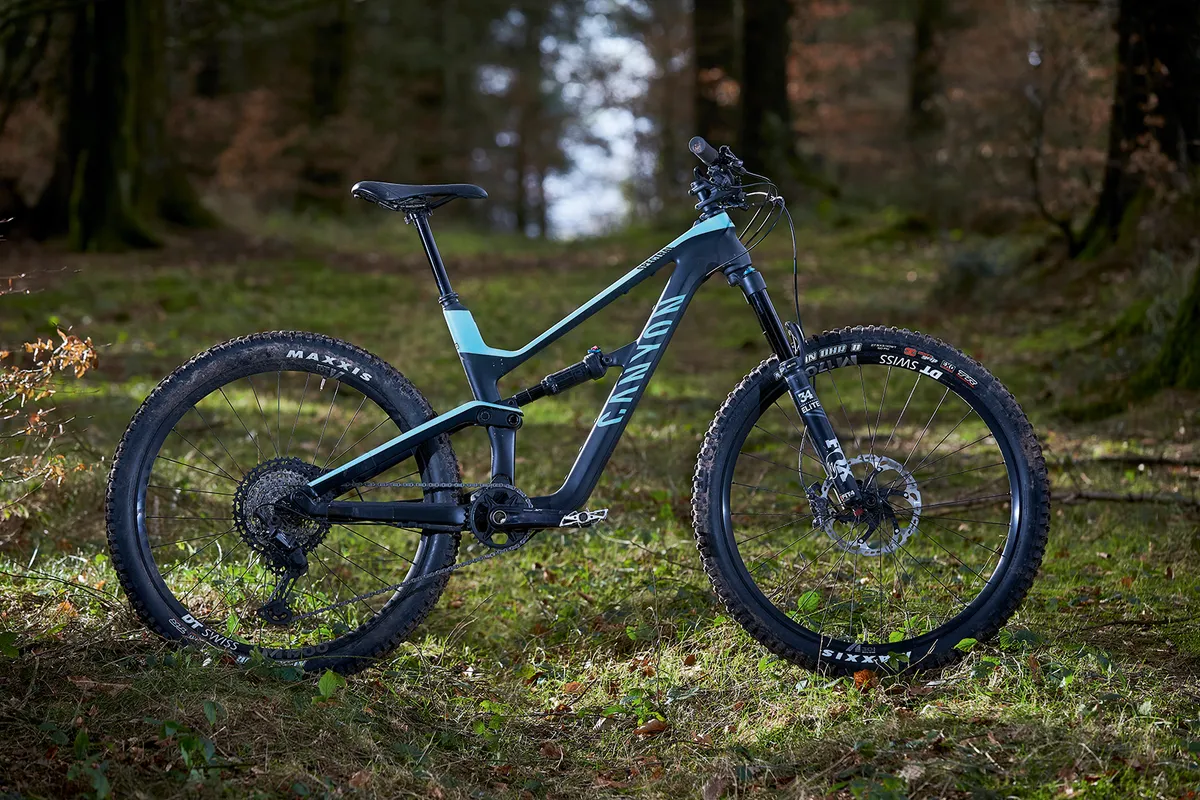
- Very capable trail bike with women’s-specific geometry
- Excellent spec and value for money
- £3,249 / AU$5,499 / €3,499 as tested
Ideal for trail riding and sitting more towards the XC end of the spectrum, the Canyon Spectral WMN is built around women’s-specific geometry and offers 150mm fork travel and 140mm rear travel.
As ever with bikes from the German direct-sales brand, the spec on this bike represents excellent value for money, with a carbon frame and Shimano Deore XT drivetrain.
Juliana Wilder CC X01 AXS Reserve
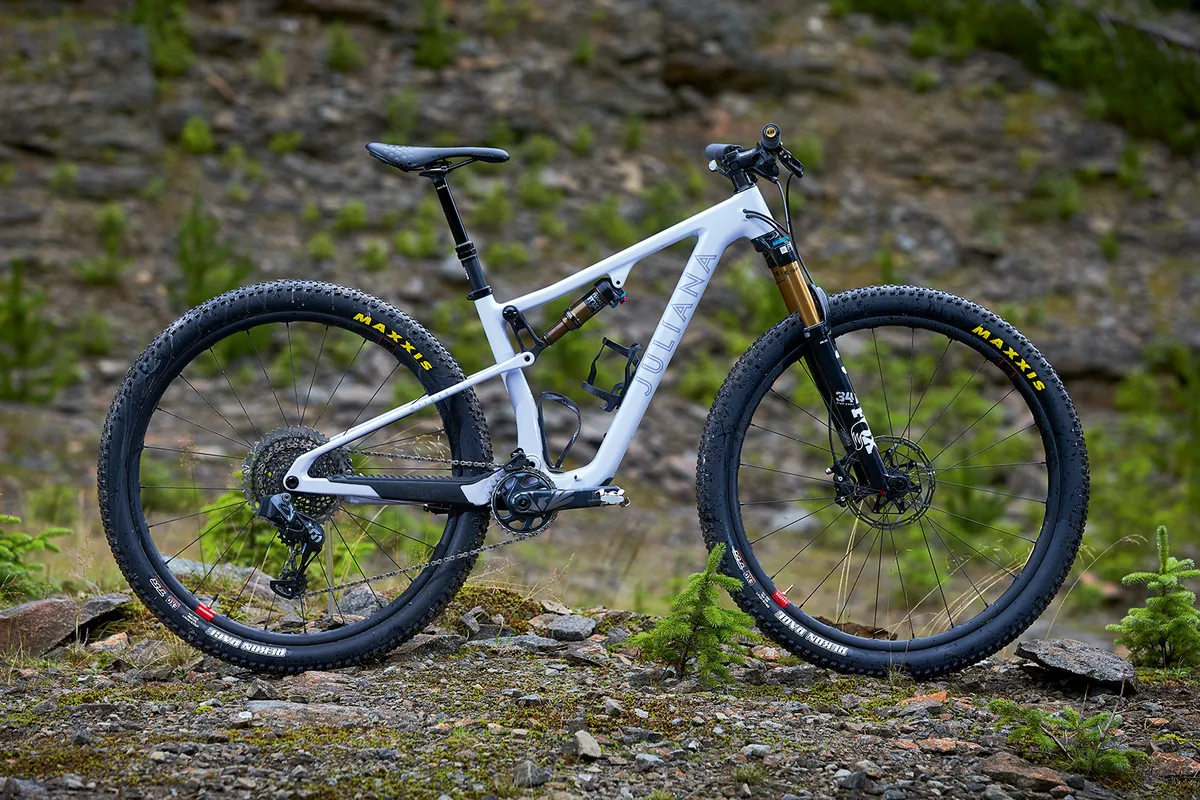
- £8,299 / $9,449 as tested
- Premium build with electronic SRAM X01 AXS shifting
- Featherweight 10.5kg (small, without pedals)
- Reserve 29er carbon wheels
- Rapid climber yet surprisingly capable on trail descents
Juliana’s downcountry offering impressed on test, giving solid credence to this new category that blends the best of both worlds, pairing the lightweight climbing prowess of XC bikes with the technical capability you’d expect from the trail bike category.
While you’ll need rather deep pockets to be able to afford this top-end model, alternative specs start from £4,499 / $4,599.
A single-pivot linkage with flex-stays has helped to keep weight to a minimum, dropping 289g from the previous, VPP linkage design of the Blur, the Wilder’s unisex equivalent from Santa Cruz.
What type of mountain bike do I need?
There are many different types of mountain bike to choose from, all designed to suit particular types of terrain or riding. The most popular mountain bikes are aimed at cross-country, trail or all-mountain/enduro riding.
Another consideration is whether you want to purchase a hardtail (front suspension) or full-suspension (front and rear suspension) mountain bike.
Full-suspension or hardtail mountain bike?
Most mountain bikes come with suspension, which just like suspension in a car is designed to smooth rough terrain to make the ride experience more comfortable and to give the tyres maximum traction on the ground.
Hardtail bikes have a rigid frame with suspension in the front fork, while full-suspension bikes have a suspension fork on the front and a suspension shock on the rear, which allows the rear wheel to move.
Full-suspension bikes tend to be more expensive, but are better able to handle steep, rough and technical terrain. Hardtails are efficient at climbing, need less set up and maintenance, are popular with cross-country riders and are well suited to most trail centres, bridleways and moderately technical terrain.
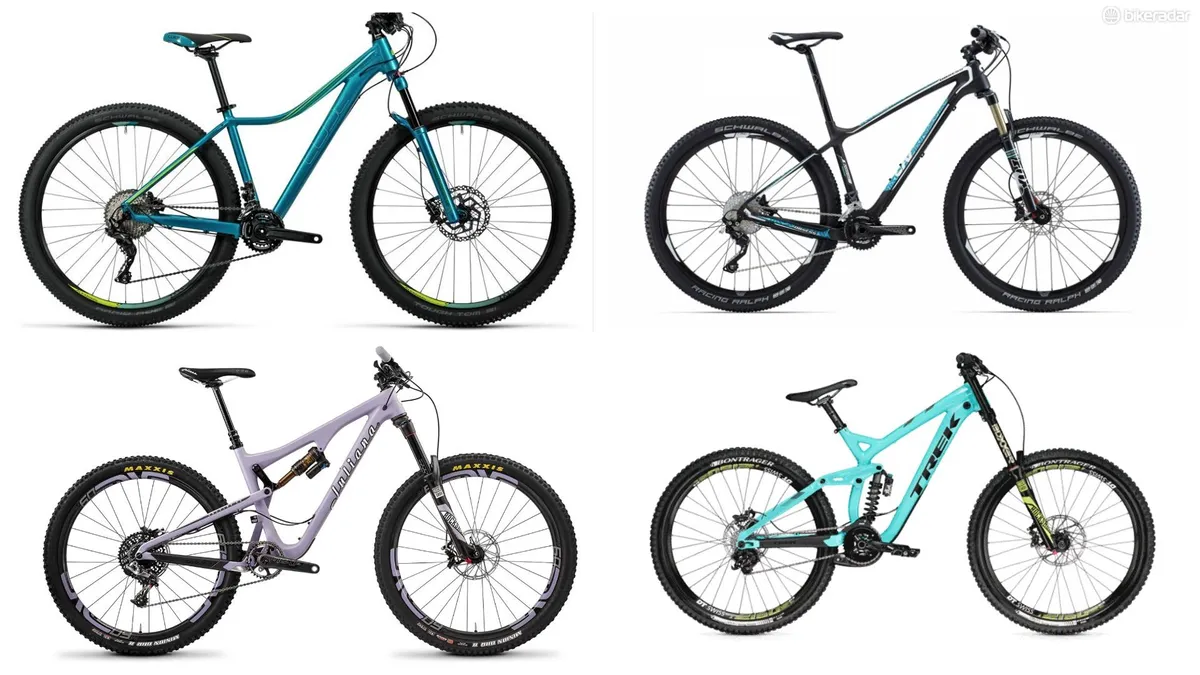
Cross-country/XC mountain bikes
Cross-country mountain bikes (also known as XC) are designed for speed off-road and usually consist of a lightweight, stiff frame and fast-rolling tyres.
29er (29in) wheels are popular and most will have around 80 to 100mm of travel on their suspension fork. These bikes are ideal for people who like to go fast for long distances, above all else.
Cross-country bikes with longer travel are becoming more popular. Sometimes called ‘downcountry’, these are light and fast but designed to ride more technical terrain while retaining a playful, agile feeling on flatter ground.
Trail mountain bikes
Trail mountain bikes are the most popular type of mountain bike because they are so versatile. Suspension travel is usually in the region of 130 to 150mm, which gives more scope for tackling bigger features.
The geometry is more relaxed than on racy XC bikes, putting the rider in a more stable and confidence-inspiring position on descents.
Modern trail bikes also perform very well when pedalling uphill and you can expect either 29in or 27.5in (also known as 650b) wheel sizes.
You can find both full-suspension and hardtail trail bikes. Trail bikes are suitable for the majority of riding, from trail centres to natural terrain.
Enduro and all-mountain bikes
All-mountain and enduro mountain bikes are increasingly popular, particularly with riders who like all-day adventures in mountain environments. They're able to handle climbs and combine versatility with capable handling for techy descents.
This type of bike will usually be a full-suspension setup, and will have more travel than a trail bike – around 160 to 170mm. Aside from enduro racing, this type of bike is great for riders who like technical terrain and long days out exploring natural trails and mountain routes.
They’re an increasingly popular choice for mountain bike holidays in places such as the French Alps, Canada’s Whistler and similar.
Downhill mountain bikes
Downhill mountain bikes are designed to do one thing well and that’s go downhill fast (in case you hadn’t guessed), whether in a race or on purpose-built tracks.
They’re likely to feature a whopping 200mm of travel front and rear, and have super-slack frame angles to make the steepest of slopes manageable.
Because they’re designed to descend, they aren’t as good at climbing, and most downhillers will push back up to the top of a track or use an uplift service or chairlift rather than attempt to ride.
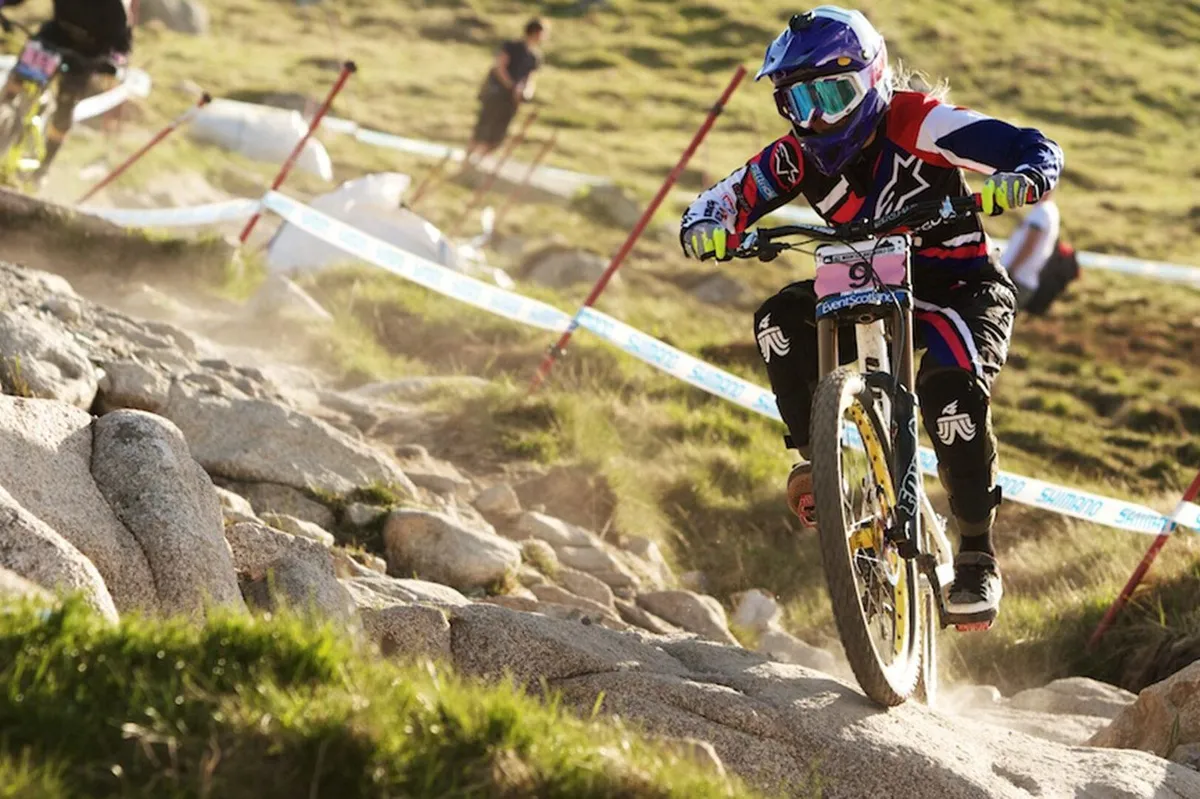
What size women’s mountain bike do I need?
Like shoes and clothes, women's bikes come in different shapes and sizes to fit different people. Mountain bikes generally use one of two sizing systems: either small, medium, large etc. or a measurement in inches, 13in, 15in, 17in etc.
First, look at the manufacturer's guidelines, which will provide a recommended height range for each size, or sometimes calculate the best size for you based on a combination of your height and inside leg measurement.
Next, try and give the size you’re thinking about a test ride to see how it feels. Some shops will have a demo fleet and many brands host demo events and weekends. If you sit between two sizes, testing is particularly important to work out which size offers the best fit.
Once you’ve got the bike frame size sorted, you can fine-tune the fit by adjusting the saddle height, handlebar height and width. The better the fit, the better the bike will be to ride.
Women’s mountain bike features and specs
Most modern mountain bikes are either based around a unisex frame, such as those made by Specialized, Trek, Whyte and YT, or around a frame and build that has been specifically designed for women, such as Liv and Canyon.
Unisex bikes may or may not have the option to fit a women’s-specific saddle or narrower handlebars.
If you’d like more details on the differences between unisex and women's-specific bikes, check out our article on the different approaches to women’s bike design.
Most women’s-specific bikes will also have some, if not all, of the following features…
- Saddle: Almost all women’s-specific bikes will feature a women’s saddle, which many women find more comfortable than unisex or men’s saddles.
- Sizes: Good news for smaller riders, women’s-specific lines in many brands go down to smaller sizes than the unisex lines.
- Cockpit: The control area of the bike is often set up for the on-average smaller hands of women, using smaller grips, narrower handlebars, and brakes with adjustable reach.
- Wheel size: Mountain bikes usually come with either 29in or 27.5in wheel sizes. For smaller frames, which are usually in the women’s bike range, 29er wheels may be swapped for 27.5 wheels, so the geometry and handling is not compromised by disproportionately larger wheels.
- Suspension: The majority of women’s-specific bikes will have a suspension tune that’s designed to suit the lighter on average weight-to-height ratio of women.
But do you need one?
As with anything to do with bikes, we’d always recommend taking a bike for a test ride where possible before deciding on it. Some women find women’s-specific bikes suit them, while others get on fine with unisex bikes.
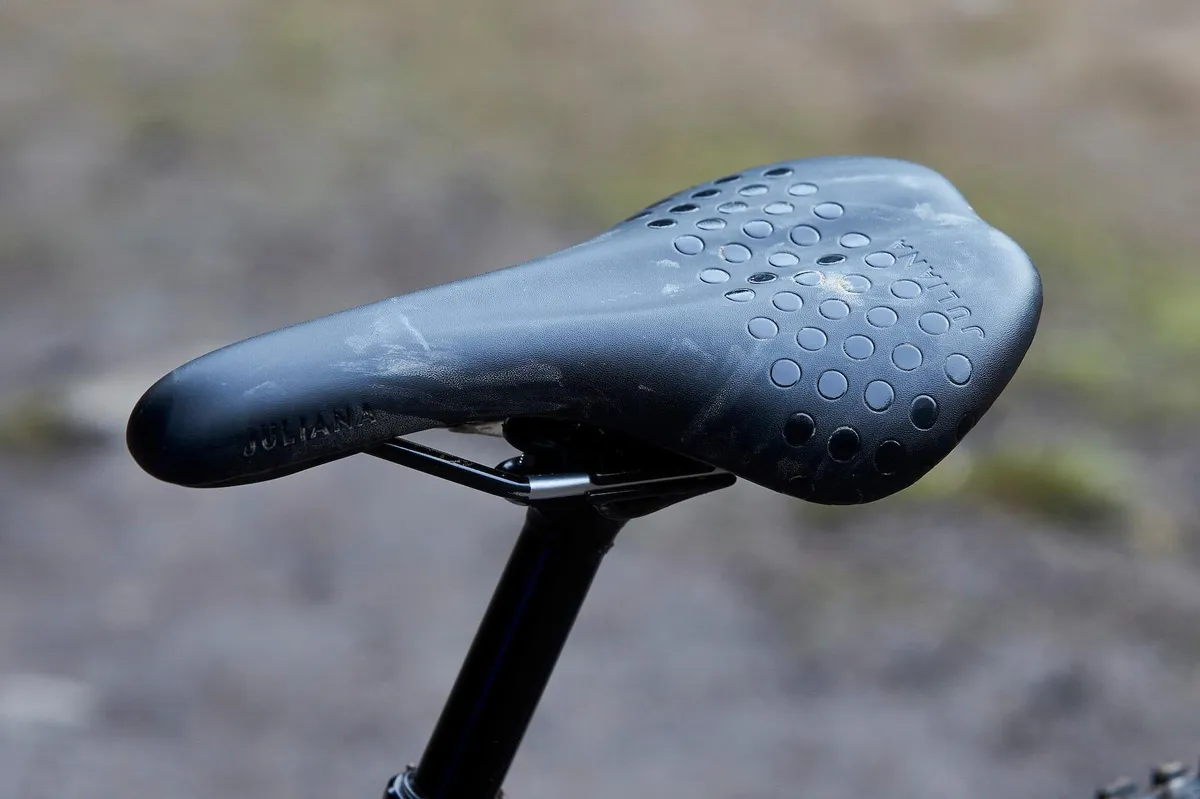
How much should I spend?
Budget is often one of the biggest factors when it comes to deciding which mountain bike to get. While mountain bike prices go well north of £4,000, you can get a perfectly decent bike for a fraction of that cost. There are, however, a few things you should consider.
Whether they’re mechanical or hydraulic, look for disc brakes rather than rim brakes because they’ll provide the stopping power you’ll need, particularly in wet and muddy conditions.
We’d recommend steering clear of full-suspension bikes priced below £500 because they are unlikely to be effective and efficient — you’re much better off going for a hardtail (no rear suspension) if this is your budget. Quality full-suspension bikes start to come in at around the £1,000 mark.
Keep some money in your budget aside for kit and components. Most mountain bikes above a certain price point won’t come with pedals and those that do may not be great, so having some money spare to get a decent quality set will make a huge difference to your ride. You’ll also want to get a helmet, glasses and gloves if you don’t already have them.
There’s a detailed breakdown on what to expect for your money in our mountain bike ultimate buyer’s guide. That said, the following is a good starting point:
- Under £350: Alloy frame and steel-forked rigid bike (no suspension) or hardtail. Around 18 gears with a triple crankset and mechanical or hydraulic disc brakes.
- £350 to £500: Alloy frame hardtail with around 100mm travel on forks, 21 to 24 gears with a double crankset, and either hydraulic or mechanical disc brakes.
- £500 to £1,000: Alloy frame hardtails and some full-suspension options, with better quality suspension forks by brands such as RockShox and Suntour. Some 1x drivetrains.
- £1,000 to £2,000: Full-suspension trail bikes, with alloy bar and stem, and hydraulic disc brakes and high-quality cross-country hardtails (these are lighter and designed to go faster rather than take on the roughest ground), with carbon or alloy frame, quality fork, such as RockShox Reba or Yari, and 11- or 12-speed gearing.
- £2,000 to £2,500: High-grade alloy or carbon frame with quality suspension components including Fox 34 or 36, or RockShox Pike forks and Fox Evolution rear suspension shock. 12-speed chainset, wheels designed to take tubeless tyres (which are less puncture prone and can be run at lower pressures for more grip) and more suspension travel options up to 150mm.
- £2,500 upwards: High-quality carbon-fibre frame with top of the range suspension from Fox or RockShox. Wide-ranging 12-speed gearing with a single-ring crankset, such as SRAM Eagle, and high-end tubeless-ready wheels.
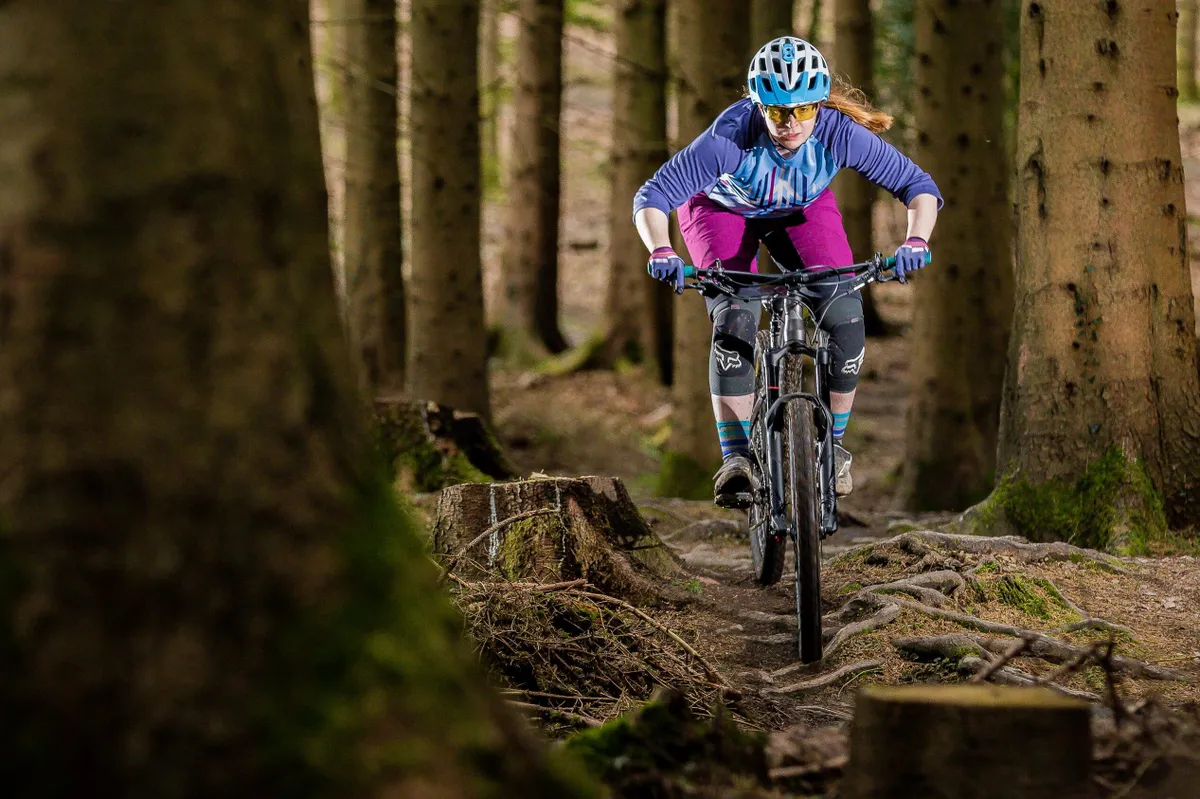
How to get a bargain women’s mountain bike
If you’re not fussed about having the latest model, you can score some serious savings by buying an older model. Many retailers will discount their bikes in the middle of the year, which means you could get around 30 per cent off.
You can also save money by buying a second-hand bike online, though there are pitfalls to be aware of to avoid falling foul of them.
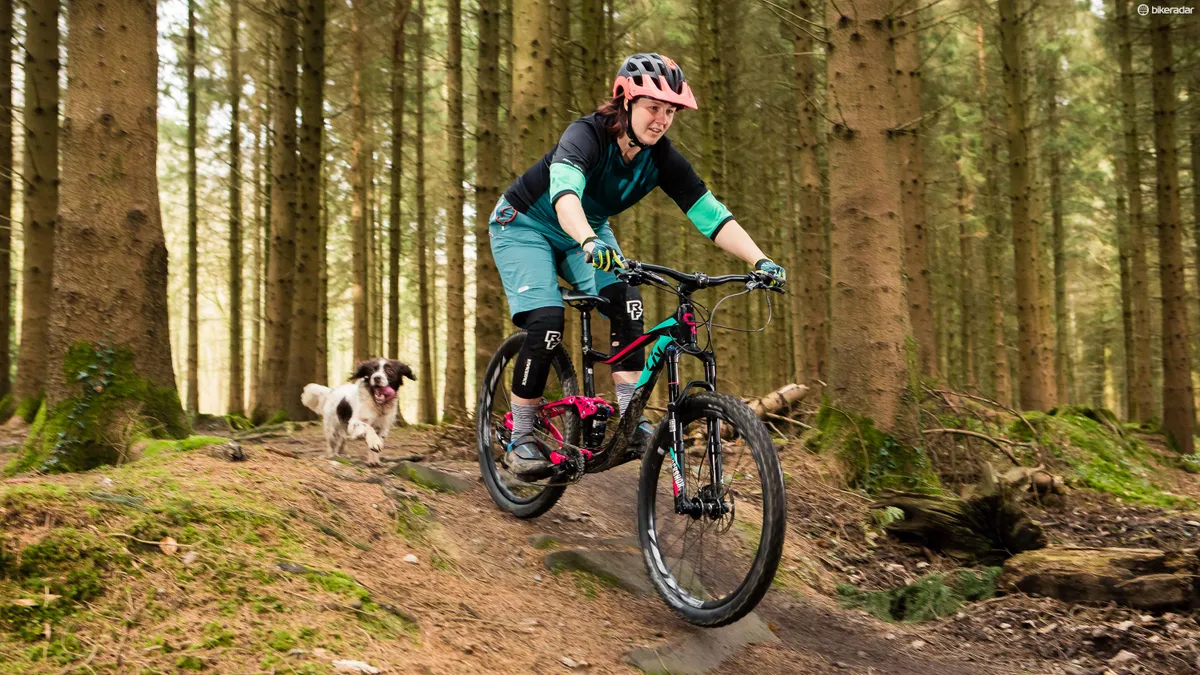
Popular women’s mountain bikes
Specialized and Trek are two major brands whose bikes are ubiquitous on trails around the world. They both produce bikes covering the full spectrum of the market, from entry-level hardtails to high-end women’s-specific trail and enduro bikes.
Liv is the women’s-specific sister company of global bike brand Giant. One of the longest established women’s-specific bike manufacturers, it boasts champion cross-country mountain bikers on its race team. Liv produces a wide range of women’s-specific mountain bikes, covering trail, cross-country, enduro and eMTBs.
Canyon is a German direct-sell brand that produces a wide range of bikes with specs that are great value for money. In 2017, it started developing a selection of bikes with a different geometry for female riders based on data it collected from its online fit system, research, and using global body dimension databases. Some, but not all, of its WMN-model bikes have this type of frame design.
Juliana Bicycles is the sister company to California-based brand Santa Cruz. The frames are unisex but the finishing kit is women’s specific. Focused on trail riding, Juliana bikes cover everything from adventure to long-travel suspension enduro bikes.
